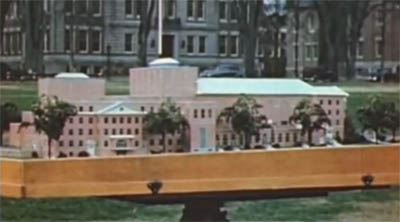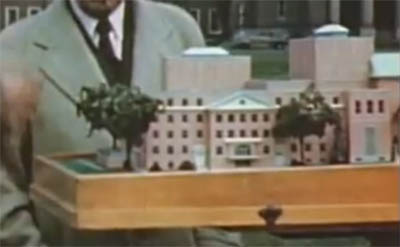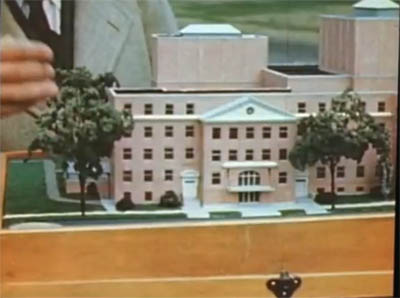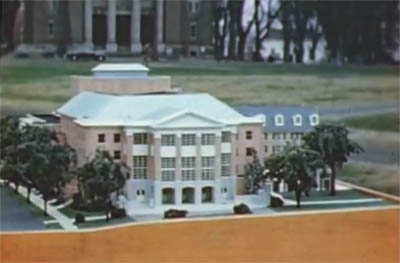Wallace Harrison’s Hopkins Center is not just the latest in a long line of buildings planned for the spot south of the Green, it is the third of three theater complexes honoring Ernest Martin Hopkins proposed for that site. The first was designed in the late 1930s, and the second was a refreshed version of the first put out after the war, both by architect Jens Larson. The postwar version was put on hold, and by the time momentum increased again in the early 1950s, Larson had left, the Georgian idiom had gone out of fashion, and new people (notably Nelson Rockefeller) had become involved.
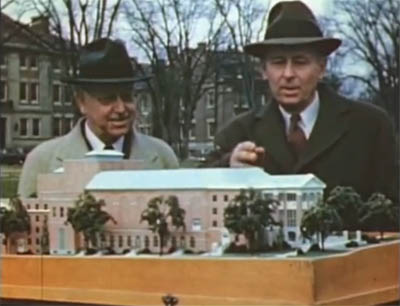
A 1947 film about Dartmouth made available by the college has several shots of a large model of Larson’s postwar Hopkins Center design. The shots begin about 9:38 into the film.
The men shown discussing the model are identified as Treasurer Halsey C. Edgerton and advisory building committee chairman Professor Russell Larmon, with Hopkins Center Committee executive secretary Robert Haig also appearing.
This plan of the 1939 version is marked with the locations of the photos below. (The plan and a section are from Warner Bentley’s article “The Dartmouth Theatre,” Theatre Arts Monthly 22:4 (April 1939), 306-309.)
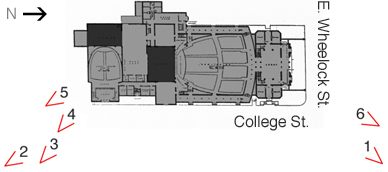
The narrator tells us that the proposed $3.5 million Ernest Martin Hopkins War Memorial Center will have a main auditorium seating 3,000 and ancillary spaces for music, drama, radio, “and allied activities.” When the present Hop was built, the site was enlarged, the film and broadcast functions were reduced or eliminated, and the auditorium was reduced and swapped with the theater at the bottom of the site. Perhaps the most notable difference is in the way the projects treated College Street: the model in the film not only preserves the street but places the entrance to its Little Theatre on it.
